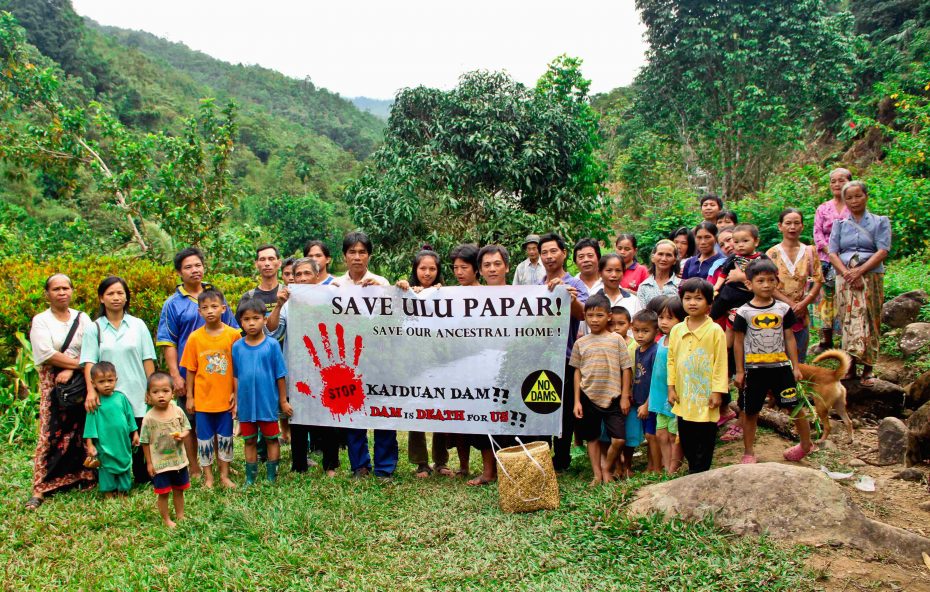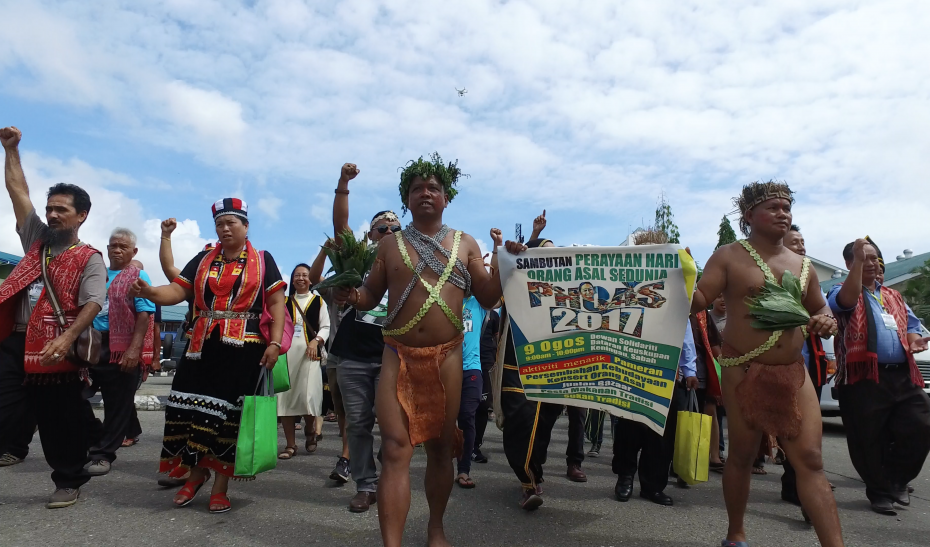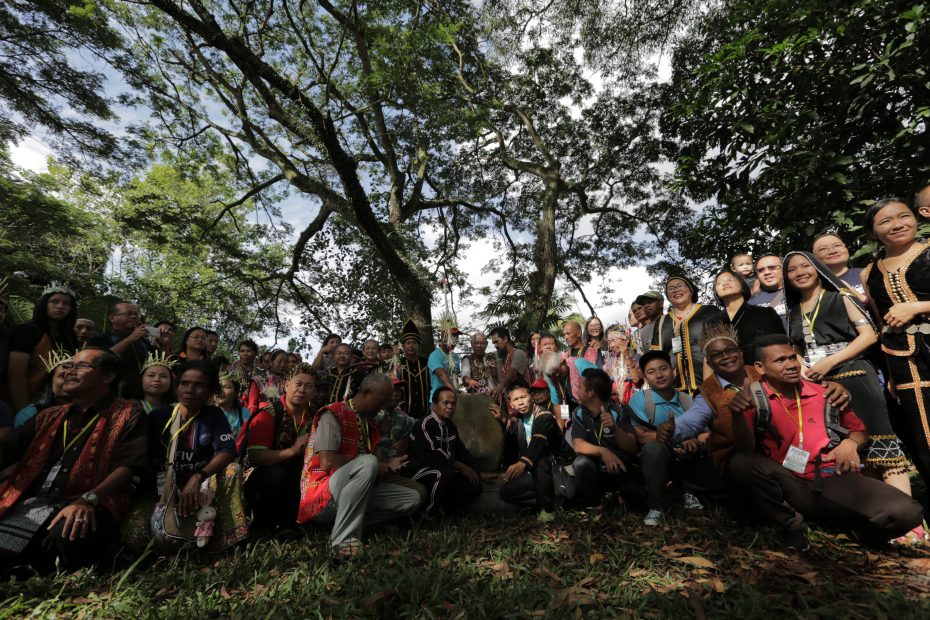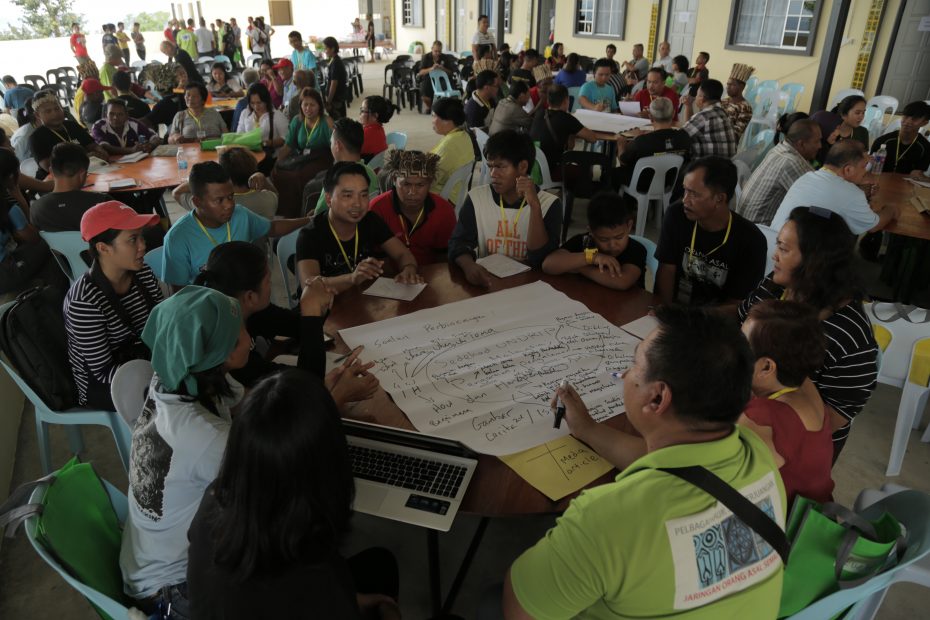WHEN the elders in Nelson Raymond’s village heard of plans for a water catchment dam to be built on Sungai Papar, Sabah, many broke down in tears. The dam would have caused the river’s banks to flood, submerging around 20 villages in the Ulu Papar area, including Raymond’s, and displacing thousands of villagers.
“The elders took it especially hard. This place has been our home for generations. It’s where we were born and raised – everything about it, from the forest to the rivers and waterfalls, are all part of our lives.” – Nelson Raymond
But despite the magnitude of the problem, not many people – even those potentially affected – had any inkling of what was to happen. This was back in 2009, when villages like Raymond’s had no phone lines, let alone Internet access.
They did have access to newspapers, though. The problem was that reports in the media favoured the same state agencies that were planning the dam.
The lack of balanced information confused many villagers, leading to many being convinced into giving up their land in exchange for money.
Some of the indigenous youth, including Raymond, decided that something had to be done. They set up a task force to spread word of the dam – but again, the lack of technology proved a huge challenge.

Indigenous media practitioners traversed the mountains to spread information to the villagers on affects of the Kaiduan Dam project. — Photos: JARINGAN ORANG ASAL SEMALAYSIA
There was no choice but to travel from village to village spreading the news by word of mouth.
“We’d travel for days at a time,” said Raymond. “The villages are spread out across a hilly region, so we’d take 4×4 vehicles as far as possible, and then travel the rest of the way to the village on foot.”
It wasn’t easy, but absolutely necessary. Without any access to reports that highlighted Orang Asal issues, the villagers didn’t know much about their land rights, or even how much damage the dam would actually cause to their homes and ancestral grounds.
The whole experience taught Raymond how important the media really is. Now, he’s a permanent member of PACOS, Partners of Community Organisations in Sabah, an NGO that works to uphold the basic rights of the indigenous peoples in Sabah over ancestral land, education and natural resources.
That indigenous people need access to media, particularly in their own languages, isn’t a new concept.

Malaysia’s national-level International Day For the World’s Indigenous Peoples celebrations saw Orang Asal representatives from across the country come together to discuss Orang Asal issues and UNDRIP principles, including the importance of media representation.
The United Nations first made a declaration stating the importance of indigenous peoples’ media back in 2007, as part of the United Nations Declaration on the Rights of Indigenous in Peoples (UNDRIP), a landmark document that outlined how indigenous peoples should be acknowledged and protected as part of a just and equitable global society.
One of UNDRIP’s articles emphasised the importance of having media outlets run by indigenous peoples in their own languages.
“The media is important to us so that we can express ourselves freely and become aware of issues to properly participate in the governance process, which is an issue of democracy. Without information from the media, it is very difficult”, said Secretary General of the Asian Indigenous Peoples Pact, Gam Shimray.
Shimray was speaking at Malaysia’s national-level celebrations for the International Day for the World’s Indigenous Peoples (IDWIP) in Keningau, Sabah.
Around the world, indigenous peoples gathered in almost every country to organise their own celebrations. But despite the global importance of the event, only a handful of journalists bothered showing up at the celebrations in Keningau, despite invitations being sent out to most major news agencies.
“It’s deeply disappointing that people don’t want to take any interest in indigenous matters because they’re often politicised,” said Raymond.
“Because of this, the media might face some editorial restrictions, diminishing our voices.”

Media representation will enable the Orang Asal to gain the information needed to participate in governance processes – the cornerstone of democracy. — ELROI YEE/R.AGE
This lack of interest wasn’t surprising to Jaringan Orang Asal SeMalaysia (JOAS), a network of indigenous peoples’ organisations working to raise awareness on issues related to indigenous people, which is why they have been deploying their own youth wing to document the event every year.
This year, R.AGE was there in collaboration with JOAS, documenting the celebrations, and at the same time, learning more about Malaysia’s Orang Asal.
The collaboration extended further than the celebration – three members of JOAS later interned at R.AGE, producing an explainer video about the importance of IDWIP as well as a highlights video of the event.
It is, hopefully, the first step towards more Orang Asal representation in media agencies, said R.AGE senior producer, Elroi Yee.
“Having the JOAS members intern with us was a win-win situation. Working with indigenous youth provided them a chance to pick up some media skills and at the same time allowed R.AGE to learn how to report on indigenous matters more accurately.” – Elroi Yee

Participants also attended media workshops during the celebrations, the first step towards becoming Orang Asal media practitioners.
The interns also created vlogs of their working experience in R.AGE, and had a session with the team on how to report on Orang Asal issues.
One of the JOAS participants, Bidayuh videographer Ik Wadell Anak Ik Pahon, 29, from Bau, Sarawak, said he learnt invaluable production skills over the course of the project.
By the end of his internship, he found that producing the explainer video had given him some ideas for a new project about Bidayuh customs and native customary lands.
“I feel there should be more opportunities for indigenous media practitioners to work with mainstream media outlets so we are able to reach a wider audience. We too are Malaysians and our voices should be heard,” he said.
“Please don’t wait till there’s a blockade or a VIP visit to report on us. Spend more time with us so you are able to better understand our problems and report accurately”.


Tell us what you think!